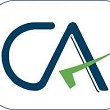
CA
69 Points
Joined January 2011
If there is a change in rate of depreciation from year to year there will be prospective effect. I.e., It is not required to recompute the depreciation from the date of acquisition.
As per AS-6 the recomputation of depreciation is required, when there is a change in method of providing depreciation like from WDV to SLM or viceversa. The draft of te AS-6 is also provided for your information.
The method of depreciation is applied consistently to provide comparability of the results of the operations of the enterprise from period to period. A change from one method of providing depreciation to another is made only if the adoption of the new method is required by statute or for compliance with an accounting standard or if it is considered that the change would result in a more appropriate preparation or presentation of the financial statements of the enterprise. When such a change in the method of depreciation is made, depreciation is recalculated in accordance with the new method from the date of the asset coming into use. The deficiency or surplus arising from retrospective recomputation of depreciation in accordance with the new method is adjusted in the accounts in the year in which the method of depreciation is changed. In case the change in the method results in deficiency in depreciation in respect of past years, the deficiency is charged in the statement of profit and loss. In case the change in the method results in surplus, the surplus is credited to the statement of profit and loss.
Such a change is treated as a change in accounting policy and its effect is
quantified and disclosed.
16. Where the historical cost of an asset has undergone a change due to circumstances specified in para 6 above, the depreciation on the revised unamortised depreciable amount is provided rospectively over the residual useful life of the asset.





 CAclubindia
CAclubindia
